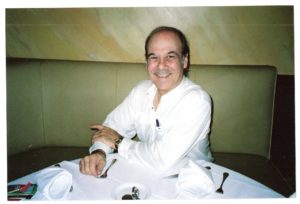A Special Moment In Time: The Time Of The Trolley: Part I
[AdSense-A]
To paraphrase a wonderful New York Globe editorial from the very early years of the 20th century, “Yes, totteleh, there were trolley cars in Miami! And Coral Gables! And Miami Beach!” Indeed, for some 35 glorious years, streetcars or trolley cars, today returning to cities throughout America under the updated moniker “light rail vehicles” operated in, to and through the then three largest cities in Dade County.
Some years ago Ed Ridolph wrote a fine, soft cover book titled “Biscayne Bay Trolleys” in which he detailed the history of the three separate systems, complete with rosters and photographs and it is in no small part due to Ed’s early research that we have learned so much about those operations, and, as it generally is, it is best to begin at the beginning, which is what, in this column, we shall do.
There is some debate as to whether the first trolleys to operate in Miami were the several of the electric variety owned by the Tatum Brothers (in later years they of, yes, you guessed it, Tatum Waterway Drive fame, that street beginning at 77th Street just before one would go over the bridge to Biscayne Beach and directly across from the west end of Biscayne Elementary School, at 800-77th Street) or those of the animal powered type which departed from the dock near either the Musa Isle or the Carhart Tower, both of those fine edifices early observation towers where one could look from today’s either 12th Avenue or 17th Avenue adjacent to the Miami River toward an Everglades that still came east almost to today’s Northwest Seventh Avenue and wound up at…you guessed it! The tower!
Tatum’s trolleys only lasted for two years while the mule or horse powered cars, which ran from the Miami River landing to the tower, may have lasted into the early teens. In any case, the city, having been founded only nine years before the first electric trolleys ran was simply nowhere near capable of filling the seats of the incipient and long before its time mass transit system.
Sometime around 1913 the second effort to run streetcars on rails occurred in Miami when several enterprising entrepreneurs determined that they could operate a trolley line profitably provided that the power to operate the car was the all the rage and coming into vogue storage battery, a massive set of batteries located under the car that promised to allow the car to run silently and flawlessly all day and until the car ran back to the street car barn for its overnight battery re-charging. Problem was, it didn’t work.
Most of the time the cars would, at some point in the work day, run out of battery charge and then would have to be pulled back to the barn by the mules or horses which, ostensibly, they had been put in place to replace. That system lasted about three years and for several years thereafter Miami had no reliable urban transit. (Much as is the situation today)
Finally, in 1919, the first electric trolley car, operating with a trolley pole connecting to an overhead wire, rolled silently down 12th Street, which, under the Chaille street renumbering plan of 1921, would create the quadrant system, turn 12th Street into Flagler Street, Avenue D into Miami Avenue and install a rational numbering system based on Southeast, Southwest, Northeast and Northwest street and avenue numbering. The trolley was an immediate hit and, at various times, the Miami street cars were run or the system was managed by the City of Miami itself, Florida Power and Light Company or The Miami Beach Railway Company, the successor company maintaining that name of the company’s buses until the Dade County MTA buyout of the private transit systems in 1963 or ’64.
At any rate, the Miami trolleys would eventually operate from a large trolley barn and yard at Southwest Second Street and Second Avenue and serve most downtown streets, Northeast Second Avenue to 36th Street, Flagler Street west to 22nd Avenue, the point at which the Coral Gables Rapid Transit Company’s street cars would leave their own tracks and begin operating on the Miami company’s trackage as they continued on to downtown Miami. Among other routes, the Seventh Avenue line, which ran past the then-new Seaboard depot at 2206 Northwest Seventh Avenue and all the way up to 35th Street was a very popular line, carrying large numbers of working people back and forth to and from their homes in that area of the city.
Next issue, the story continues with a look back at George Merrick’s Coral Gables Rapid Transit Company, it’s two separate lines into downtown Miami, and the short lived Sunset line, which, indeed “sunsetted” after on about two brief years of unsuccessful operation.
[si-contact-form form=’2′]


